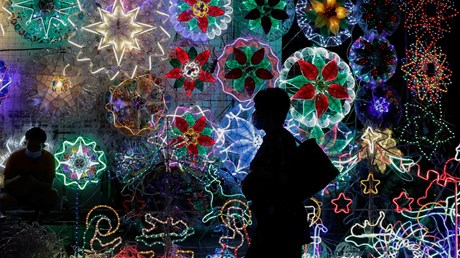How Christians keep Christ at the center when commercial forces extended the six-month celebration. (edited)

The act of a mall shop worker putting up Christmas décor might seem an ordinary sight in December, November, or even October—but this was August.
“I took a video on the phone. I had to document it,” said Steve Pardue, who grew up as a missionary kid in the Philippines and now serves as program director at the Asia Graduate School of Theology in Metro Manila.
The majority-Catholic nation has been heralded for the world’s longest Christmas season, typically spanning from September to January or February, depending on the date of the Lunar New Year. What made the moment in August even more striking for Pardue was that the Filipinos’ months-long merrymaking was continuing despite ongoing COVID-19-induced lockdowns.
While American Christians lament the “Christmas creep” beginning around Halloween, the majority (if not almost all) of Philippine society begins playing Christmas tunes and lighting up the streets at the start of the “ber” months: September, October, November, and December.
Glowing Christmas star-shaped lanterns and belens—the electrical, digital, or physical representations of Joseph, Mary, and the baby Jesus huddled together in the manger—are put up on display. The colorful lights can be seen almost everywhere, from the poshest subdivisions to the humblest shacks.
For the country’s faithful, the extended, public Christmas celebration—fueled by commercial forces more than Christian devotion—can both enhance and detract from “the reason for the season.”
For Bishop Chito Sanchez and his wife Pastor Rachel Sanchez, a Filipino couple who lead River of God Church in the National Capitol Region, the long traditional celebration ...
from Christianity Today Magazine https://ift.tt/3FiqpS3
No comments:
Post a Comment